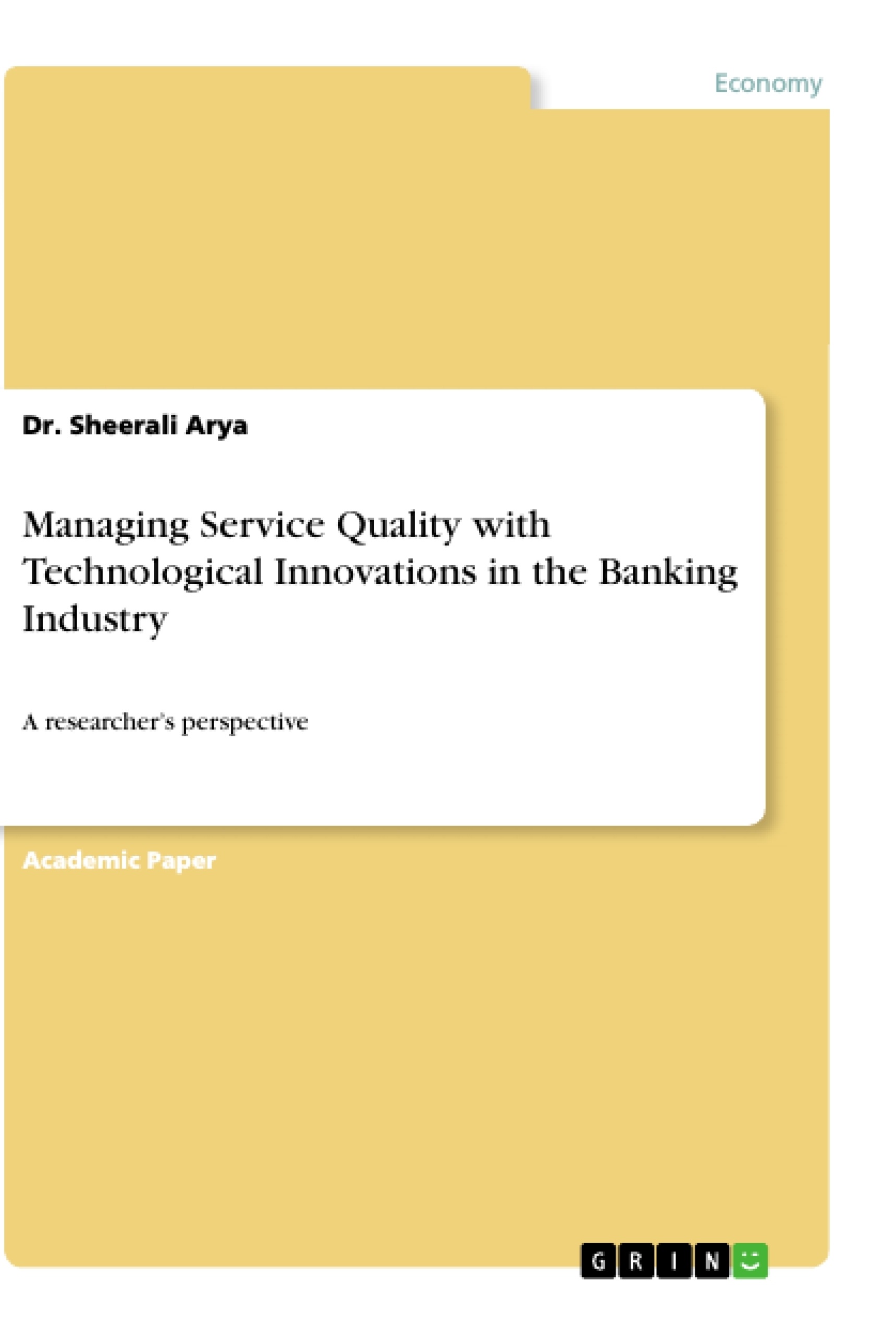This research tries to examine the impact of service quality on customer satisfaction in Banking Industry of India. The researcher has collected primary data from 850 customers of public, private and foreign sector banks operating in the northern region of India namely Delhi NCR, Uttar Pradesh, Rajasthan and Punjab. The researcher also took feedback from 50 bankers including one Senior Manager from each Bank to analyze their perspective and initiatives taken at strategic level to ensure optimum customer satisfaction is provided. The data was collected through a structured questionnaire for both customers and bankers. The secondary data was collected from academic journals, bank annual reports and credible websites. The aim of this research is specifically to analyze the dimensions of the perceived and expected service quality and its effects on customer satisfaction.
Customer satisfaction is paramount to any sector which provides service and needs to sustain its advantage over the competitors. The Banking Industry of India is highly competitive with the advent of recent entrants into the market functioning along with well-established Banks. It becomes imperative for senior management of banks to focus on quality of services and products offered to customers to ensure their growth and retention Banks need to continuously innovate their methodologies and techniques to remain at the fore front. Even though the different sector of Banks in India are making huge efforts in achieving this objective, there is not enough proof to demonstrate comparative analysis of how customer satisfaction is impacted by the quality of their services, leaving a major gap in Indian literature.
Inhaltsverzeichnis (Table of Contents)
- CHAPTER 1 - INTRODUCTION..
- 1.1 Background of the research.
- 1.2 Relevance of Banking Industry for economic growth of India.
- 1.3 Problem Statements of the Research
- 1.4 Significance of the Research.
- CHAPTER 2 - LITERATURE REVIEW...........
- 2.1 History of the Banking Industry of India
- 2.2 Structure of the Banking Industry of India
- 2.3 Constituents of the Commercial Banks of India
- 2.3.1 Public Sector Banks
- 2.3.2 Private Sector Banks
- 2.3.3 Foreign Sector Banks
- 2.4 Constituents of the Non - Commercial Banks of India
- 2.4.1 Local Area Banks.
- 2.4.2 Co-operative Banks
- 2.4.3 Regional Rural Banks..
- 2.5 Approaches to Quality.
- 2.6 Models and Theories of Service Quality and Customer Satisfaction.………………………..\n
- 2.6.1 Grönroos Model of Service Quality.
- 2.6.2 The SERVQUAL Model.....
- 2.6.3 The SERVPERF Model
- 2.6.4 Haywood-Farmer's Model of Service Quality
- 2.6.5 Attribute Model of Service Quality.
- 2.6.6 Boulding, Kalra, Staelin and Zeithaml Model of Service Quality ………………………..\n
- 2.6.7 Rust and Oliver's the three-component Model of Service Quality.
- 2.6.8 Rust, Zahorik and Keiningham's Return-on-Quality approach of Service\nQuality...\n
- 2.6.9 Philip and Hazlett's P-C-P service attribute Model of Service Quality ....
- 2.6.10 Dabholkar, Shepherd and Thorpe's Model of Service Quality ............
- 2.6.11 Brady and Cronin's hierarchical approach of Service Quality
- 2.6.12 Kang and James adaptation of the Grönroos Model of Service Quality....
- 2.6.13 Kang's hierarchical Service Quality framework.
- 2.6.14 Carr's FAIRSERV Model of Service Quality
- 2.6.15 BANKSERV Model of Service Quality.....
- Impact of service quality on customer satisfaction in the Indian banking industry
- Dimensions of perceived and expected service quality
- Influence of personalized interaction, environment, monetary benefits, and product worth on customer satisfaction
- Strategies for enhancing service quality in the banking sector
- Analysis of the Indian banking industry landscape and its challenges
- Chapter 1: This introductory chapter provides an overview of the research, highlighting the significance of the banking industry for India's economic growth. It outlines the research problem, the significance of the research, and the objectives of the study.
- Chapter 2: This chapter delves into a comprehensive literature review, tracing the history of the Indian banking industry. It explores the structure and constituents of both commercial and non-commercial banks in India. The chapter further examines various approaches to quality and presents a detailed analysis of prominent models and theories of service quality and customer satisfaction.
Zielsetzung und Themenschwerpunkte (Objectives and Key Themes)
This research aims to examine the impact of service quality on customer satisfaction in the Banking Industry of India. The study focuses on the dimensions of perceived and expected service quality and its effects on customer satisfaction.Zusammenfassung der Kapitel (Chapter Summaries)
Schlüsselwörter (Keywords)
This research revolves around the key concepts of service quality, customer satisfaction, the Indian banking industry, and the impact of technological innovations on the banking sector. The research examines the relationship between service quality and customer satisfaction, analyzing the various dimensions of service quality perceived and expected by customers.- Quote paper
- Dr. Sheerali Arya (Author), 2019, Managing Service Quality with Technological Innovations in the Banking Industry, Munich, GRIN Verlag, https://www.grin.com/document/986172



